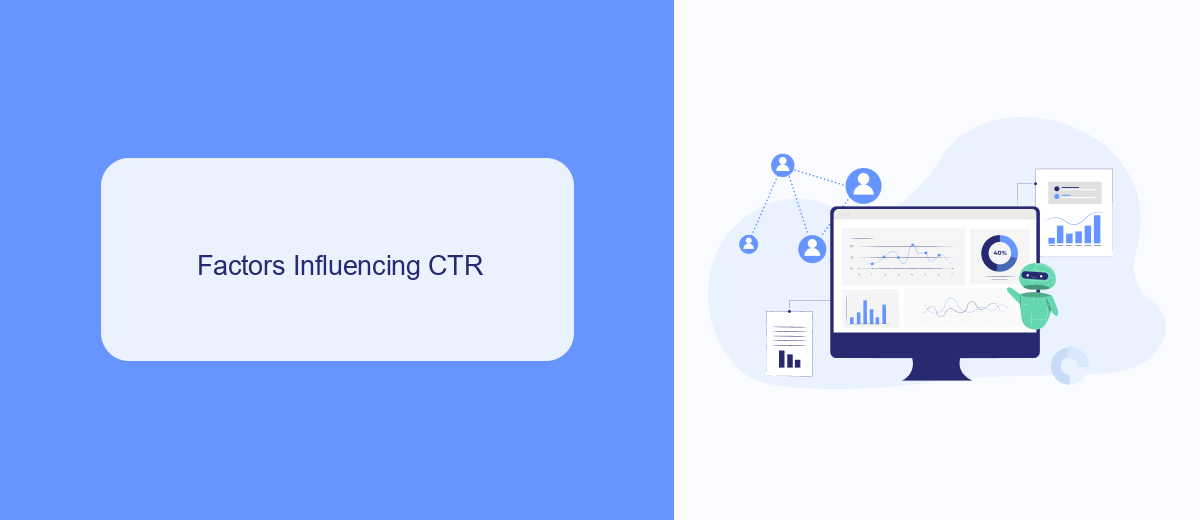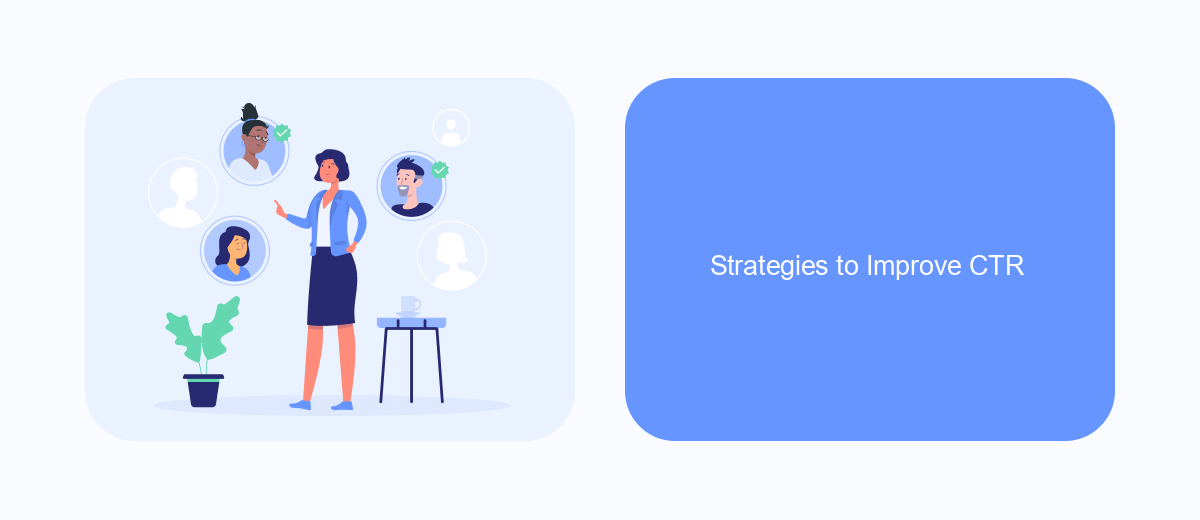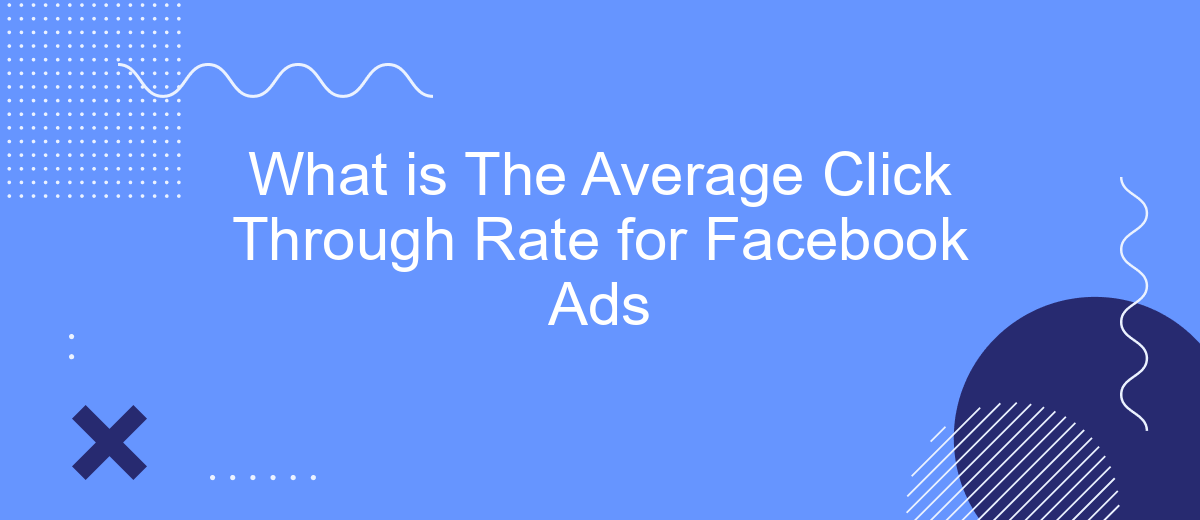Understanding the average click-through rate (CTR) for Facebook ads is essential for optimizing your social media marketing strategy. This metric indicates how effectively your ads capture the audience's attention and prompt them to take action. In this article, we will explore the factors influencing CTR, industry benchmarks, and tips to improve your ad performance on Facebook.
Facebook Ad Click Through Rate (CTR) Average
The average Click Through Rate (CTR) for Facebook ads can vary significantly based on industry, target audience, and ad quality. Generally, a CTR of 0.90% to 1.5% is considered good for Facebook ads. However, achieving a higher CTR often requires optimized ad campaigns and precise targeting.
- Industry-specific benchmarks: Different industries have varying average CTRs. For example, the retail sector may have higher CTRs compared to B2B services.
- Ad relevance: Ads that are highly relevant to the target audience tend to have higher CTRs.
- Creative quality: High-quality visuals and compelling ad copy can significantly boost CTR.
- Targeting: Precise audience targeting can improve CTR by reaching users who are more likely to engage with the ad.
- Integration tools: Utilizing services like SaveMyLeads can streamline your ad management and improve performance by automating lead integrations.
To maximize your Facebook ad CTR, it's essential to continuously monitor and adjust your campaigns. Using integration tools such as SaveMyLeads can help automate processes and provide valuable insights, ensuring your ads reach the right audience efficiently.
Factors Influencing CTR

Several factors influence the Click Through Rate (CTR) for Facebook Ads. The relevance of the ad content to the target audience is crucial; ads that resonate well with the audience's interests and needs are more likely to be clicked. Additionally, the quality of the ad's visual elements, such as images and videos, plays a significant role. High-quality visuals that are engaging and eye-catching can significantly boost CTR. The ad copy, including the headline and call-to-action, must be compelling and clear to encourage users to click.
Another important factor is the proper targeting of the ad. Utilizing Facebook's advanced targeting options to reach the most relevant audience can enhance CTR. Moreover, the timing and frequency of the ad's appearance can impact its effectiveness. Tools like SaveMyLeads can be instrumental in optimizing ad performance by automating lead data integration, ensuring timely and accurate targeting. Finally, continuous testing and optimization, including A/B testing different ad variations, can help identify what works best, thereby improving CTR over time.
Industry Benchmarks

Understanding industry benchmarks for Facebook Ads is crucial for evaluating your campaign's performance. These benchmarks provide a reference point, helping you determine whether your click-through rate (CTR) is above or below average. Here are some industry-specific benchmarks to consider:
- Retail: The average CTR is around 1.59%, reflecting the competitive nature of this sector.
- Legal: Legal services typically see a lower CTR, averaging about 1.04%.
- Education: Educational ads tend to perform well, with an average CTR of 1.85%.
- Technology: Tech-related ads generally achieve a CTR of 1.04%.
- Healthcare: Healthcare ads often have a CTR of approximately 1.79%.
To optimize your Facebook Ads and achieve higher CTRs, consider using integration services like SaveMyLeads. This platform automates lead data transfer, ensuring timely follow-ups and better engagement, ultimately boosting your ad performance. By aligning your campaigns with industry benchmarks and leveraging advanced tools, you can significantly enhance your marketing efforts.
Strategies to Improve CTR

Improving the Click Through Rate (CTR) for Facebook Ads is crucial for maximizing the effectiveness of your advertising campaigns. One of the key strategies involves creating compelling ad copy and visuals that resonate with your target audience. Ensure your message is clear, concise, and offers a strong call-to-action.
Another effective approach is to optimize your audience targeting. Utilize Facebook's robust targeting options to reach users who are most likely to be interested in your product or service. This can significantly increase the relevance of your ads and, consequently, the CTR.
- Use high-quality images and videos to capture attention.
- Test different ad formats such as carousel or video ads.
- Leverage A/B testing to determine the most effective ad creatives and copy.
- Integrate SaveMyLeads to streamline lead generation and follow-up processes.
By implementing these strategies, you can enhance the performance of your Facebook Ads and achieve a higher CTR. Remember, continuous testing and optimization are key to understanding what works best for your specific audience.
Monitoring and Optimization
Effective monitoring and optimization of your Facebook Ads campaigns are crucial for achieving a desirable Click Through Rate (CTR). Regularly review your ad performance metrics using Facebook Ads Manager to identify which ads are performing well and which ones need adjustments. Pay close attention to key metrics such as CTR, conversion rates, and cost per click (CPC). By analyzing these metrics, you can make data-driven decisions to refine your targeting, ad creatives, and bidding strategies.
To streamline the optimization process, consider integrating automation tools like SaveMyLeads. SaveMyLeads allows you to connect Facebook Ads with various CRM systems, email marketing platforms, and other services without any coding knowledge. This integration helps in automating lead management and follow-ups, ensuring that you are promptly responding to potential customers. By leveraging such tools, you can save time and focus on strategic adjustments to improve your CTR and overall campaign effectiveness.
- Automate the work with leads from the Facebook advertising account
- Empower with integrations and instant transfer of leads
- Don't spend money on developers or integrators
- Save time by automating routine tasks
FAQ
What is the average click-through rate (CTR) for Facebook Ads?
How can I improve the CTR of my Facebook Ads?
Does the type of ad format affect the CTR on Facebook?
Are there tools to help automate and optimize Facebook Ads campaigns?
How often should I review and adjust my Facebook Ads to maintain a good CTR?
SaveMyLeads is a simple and effective service that will help you automate routine tasks and optimize business processes. Stop wasting time uploading leads from Facebook manually – you can do it automatically, saving a lot of time and money. Eliminate routine from workflows and achieve more with minimal investment of money, effort and human resources.

